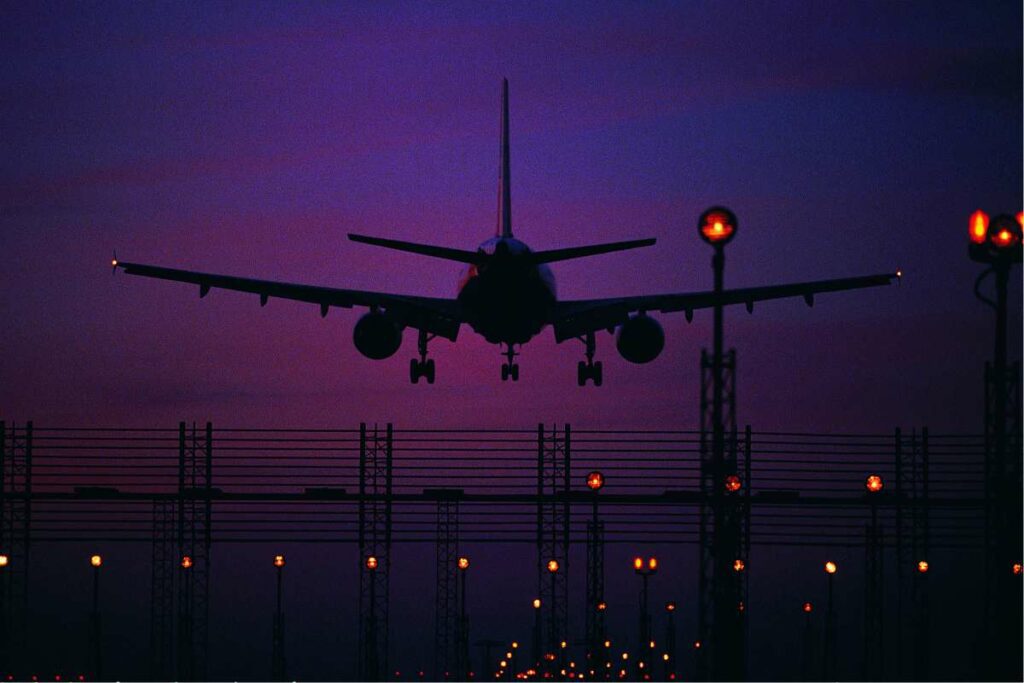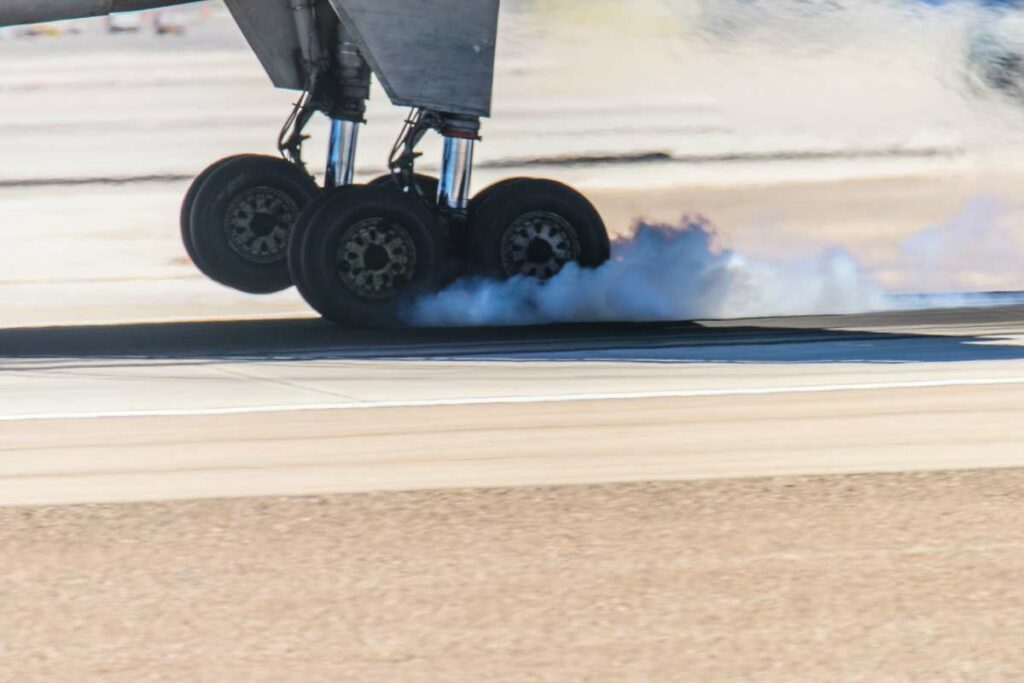If you have researched a little bit about Ryanair and its services, you have probably come across the issue with the way of the landing of this airline company.
There have been a lot of complaints going on around the internet about the way this airline lands, and there have been discussions on the reasons for this.
So, why are Ryanair landings so bad, and are there any particular reasons for this issue?
Generally, Ryanair does not have a lot of time between take-offs and landings, so they are known for their “hard” landing that prevents their chance of having to go around.

Ryanair pilots are well-trained and experienced in this kind of landing, so passengers should not feel as if they are in danger.
In this article, I will discuss the question related to Ryanair’s landing that has been going on all around the internet.
Here, I will try to shed some light on this point, so if you intend to fly with this airline, you would know what to expect. There are reasons why Ryanair is characterized by hard landings, and you will read all about them below.
Why Are Ryanair Landings So Bad?
If you have checked some of the forums and blogs related to Ryanair and its services, you have probably read all about the landings that people have experienced.
People have complained a lot, claiming that Ryanair landings are hard and some do not consider them safe.
However, you should also be aware that these complaints have been written by passengers, not aircraft professionals and pilots, so some opinions might be exaggerated or not informed enough.

Firstly, it is important to take into consideration that the 737 is a difficult plane to land, meaning that it cannot provide a perfectly smooth landing as people expect.
Find out – Is Ryanair Safe to Fly With?
Also, you should remember that no landing is perfect, so you cannot expect that you will not feel when the plane touches the ground.
There have been a lot of changes in the airplanes’ parts since the invention of the first model, so pilots cannot get used to and adjust to these changes immediately, especially if a particular pilot changes a lot of aircraft.
However, it is true that Ryanair landings are characterized by firmer landings than others.
Many people tend to claim that pilots are not experienced enough, or are not trained well. Therefore, they do not know how to land the aircraft smoothly so people would not notice the touching of the land so hard.
Need a hotel deal this month? See the latest offers on booking.com
While the passengers are right when they say that the landings are firm and hard, they are incorrect when they say that the pilots are not trained well or enough.
As a matter of fact, the pilots are trained quite rigorously, and they have passed a great amount of training in the way of landing in every possible weather and condition.
Therefore, when the pilots are landing the aircraft, they know exactly what they are doing, and the landing is not dangerous as people may assume.
Check out this compilation video of RyanAir’s hard landings!
Is The Hard Landing A Common Practice In Ryanair?
As I mentioned above, the landings that passengers perceive as hard and dangerous is not unsafe and it is practiced due to particular reasons.
In other words, the pilots are trained for this kind of landing, although this way of touching the ground might be considered scary for passengers.
It is important to understand that Ryanair pilots are rigorously trained and this is one of the safest methods that enables them to land in whatever conditions are presented to them.
So, now you might wonder why Ryanair practices this kind of landing if many passengers are complaining about it.
The answer to this question lies in the high demand for the flights of this airline.
Since RyanAir does not have as many flights in one day as many other airlines, they do not have a lot of time between takeoffs and landings, meaning that they do not have time to go around.
The hard landing provides the pilots the ability to land safely and firmly in any kind of conditions, and in a quick manner.
This helps the pilots to save time, and not to waste it in circles in the air before touching the ground as many other airlines do. This also saves money for the airline company, so that is one more reason for practicing this method for landing.
In other words, the hard landing is not due to the inexperience of the pilots, but rather the policies of the airline.
Many people believe that the pilots in Ryanair are not trained enough, and they have not flown a lot, but the truth is that they are actually trained in the safest methods.
As a matter of fact, a lot of airlines have young pilots that do not have years of experience, however, that does not mean that they have not been trained in a safe landing.
Check out this popular YouTube Videos that explains hard landings from a pilot’s perspective.
When discussing the landing of Ryanair, people should not blame the pilots because they are just doing what is asked of them to do.
Why Does Ryanair Land So Hard
The high demand for Ryanair cheap flights is imposing the necessity of quick landings, or as people refer to them – the hard landings.
In addition, these hard landings are actually one of the safest methods for landing a plane considering that this is a sure way that the aircraft will touch down.
It can be said that Ryanair is saving money and time on these landings, and that is actually the way they make a profit. This is how they are able to offer such cheap flights at any time.
If you have wondered about the “bad” landings of Ryanair, I hope that now you understand the reasons behind them. They are not actually bad landings, but rather quick and firmer ones. However, you can be sure that they are perfectly safe.
I have personally flown with Ryanair many times and never noticed much difference in landings compared with other airlines.
You are in the capable hands of fully trained pilots that are landing (although firmly) exactly as they are intending.
Find out next
FAQ Ryanair Hard Landing

Why Are Ryanair Landings So Hard?
Ryanair pilots are trained to land with a higher approach speed to reduce the risk of tail strikes.
This can result in a firmer touchdown that some passengers may perceive as “hard.” Ryanair’s tight schedules and quick turnarounds may also contribute to less time for pilots to perform a smooth landing.
Why does Ryanair Land So Hard
Ryanair landings are often noticeably firmer than other airlines.
Many people blame the airline and/or their pilots for this, stating that Ryanair does not train them so they do not know what they are doing and can’t put it down smoothly.
Are Ryanair’s hard landings safe?
Hard landings can be considered one of the safest ways to land a plane, as they ensure that the aircraft touches down firmly on the runway.
Ryanair seems to have adopted this approach to save time and money, which is one of the reasons why they can offer such affordable flights.
By using this landing technique, Ryanair can optimize their landing timeslots and increase their profits.
Why does Ryanair encourage pilots to land in situations where other carriers would abort the landing?
Ryanair encourages pilots to land in situations where pilots for other carriers would abort the landing and go around, so as not to waste an expensive landing timeslot.
Is hard landing a common practice in the aviation industry?
A: Yes. Banging the wheels down is a common practice in the aviation industry to reduce the risk of aquaplaning. Pilots are taught to do it all the time so that it is second nature and they don’t have to assess aquaplaning risk.
Are Ryanair Pilots Any Good?
We have written a separate article on this subject. You can read it here.
Why Is Ryanair So Bad
There are several reasons why Ryanair has been rated poorly by customers and consumer groups. Some reasons include hidden costs that catch out passengers, poor customer service, and a reputation for being greedy and arrogant.
Ryanair also operates out of smaller airports that are located far from city centers and can be poorly connected to the city. However, some people still choose to fly with Ryanair because of their low fares.



